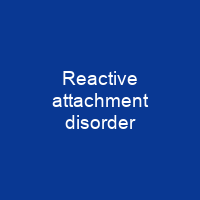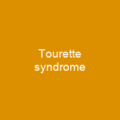Reactive attachment disorder is characterized by markedly disturbed and developmentally inappropriate ways of relating socially in most contexts. It can take the form of a persistent failure to initiate or respond to most social interactions in a developmentally appropriate way. Children with RAD are presumed to have grossly disturbed internal working models of relationships that may lead to interpersonal and behavioral difficulties in later life.
About Reactive attachment disorder in brief

When the child is not offered comfort and when the child does not respond to the comfort offered, he/she is less likely to be offered comfort. This can manifest itself in three ways: The core feature is severely inappropriate social relating by affected children. The initial presentation varies according to the child’s developmental and chronological age, although it always involves a disturbance in social interaction. Infants up to about 18–24 months may present with non-organic failure to thrive and display abnormal responsiveness to stimuli. Children can form stable attachments and social relationships despite marked abuse and neglect. However, the instances of that ability are rare. The name of the Disorder emphasizes problems with attachment but the criteria include symptoms such as failure to survive and apathy, and onset before 8 months. It is differentiated from pervasive developmental disorder or developmental delay and from possibly comorbid conditions such as intellectual disability, all of which can affect attachment behavior. The opening of orphanages in Eastern Europe following the end of the Cold War in the early 1990s provided opportunities for research on infants and toddlers brought up in very deprived conditions. Such research broadened the understanding of the prevalence, causes, mechanism and assessment of disorders of attachment and led to efforts from the late 1990s onwards to develop treatment and Prevention programs and better methods of assessment. In the DSM-5 the \”disinhibited form\” is now considered a separate diagnosis named \”dis inhibited attachment disorder\”. RAD arises from a failure to form normal attachments to primary caregivers in early childhood.
You want to know more about Reactive attachment disorder?
This page is based on the article Reactive attachment disorder published in Wikipedia (as of Dec. 06, 2020) and was automatically summarized using artificial intelligence.







